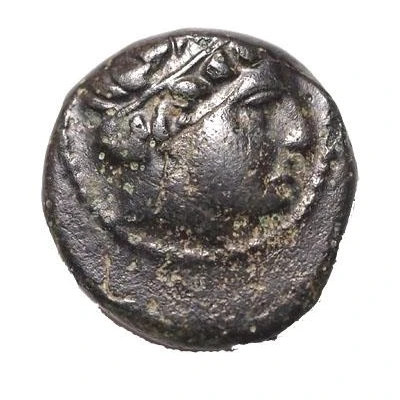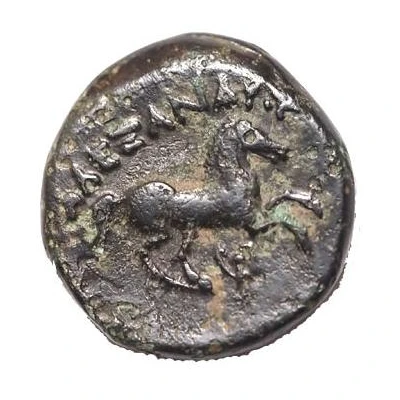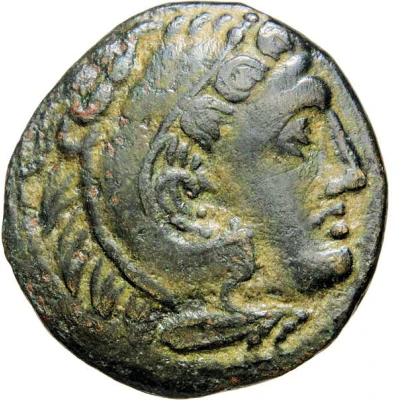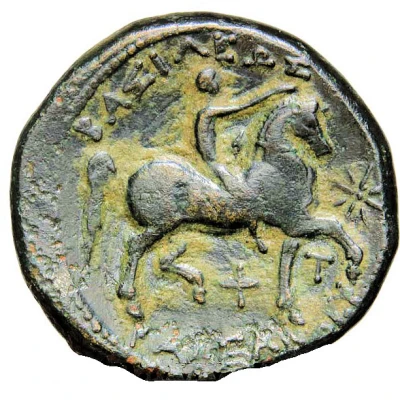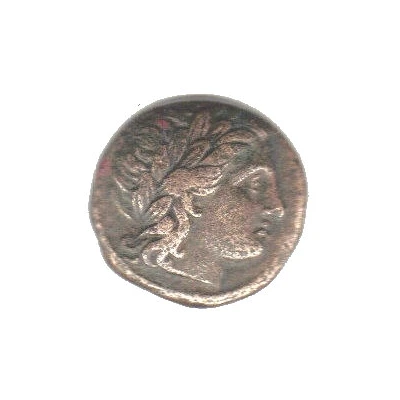
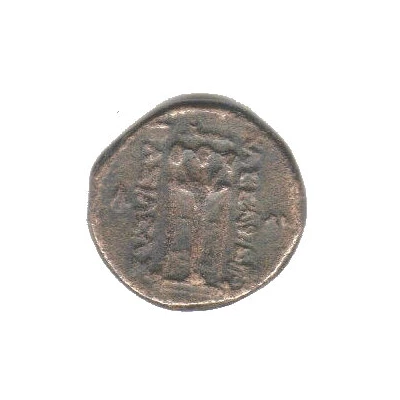

Obverse © collec.perso
Hemiobol - Kassander 316 BC - 297 BC
| Bronze | 6.65 g | 19 mm |
| Issuer | Kingdom of Macedonia |
|---|---|
| Regent | Cassander (317 BC - 305 BC) |
| Type | Standard circulation coin |
| Years | 316 BC - 297 BC |
| Value | Hemiobol (1⁄12) |
| Currency | Drachm |
| Composition | Bronze |
| Weight | 6.65 g |
| Diameter | 19 mm |
| Thickness | 2 mm |
| Shape | Round (irregular) |
| Technique | Hammered |
| Demonetized | Yes |
| Updated | 2024-10-10 |
| Numista | N#37592 |
|---|---|
| Rarity index | 91% |
Reverse
KASSAN-DROU either side of tripod
Script: Greek
Lettering:
ΒΑΧΙΛΕΛΣ ΚΑΣΣΑΝΔΡΟ
ΛΙ
Edge
Plain
Interesting fact
The Hemiobol coin was used during the reign of Kassander, who was a king of the Kingdom of Macedonia from 316 BC to 297 BC. The coin features an image of a youthful Hercules, who was considered a symbol of strength and power in ancient Greek culture. The coin's design was meant to convey Kassander's ambition to revive the Macedonian Empire, which had been weakened by previous wars and political instability. Despite its small size, the Hemiobol coin played an important role in the economy of the time, as it was widely used for everyday transactions and was valued for its durability and portability.
